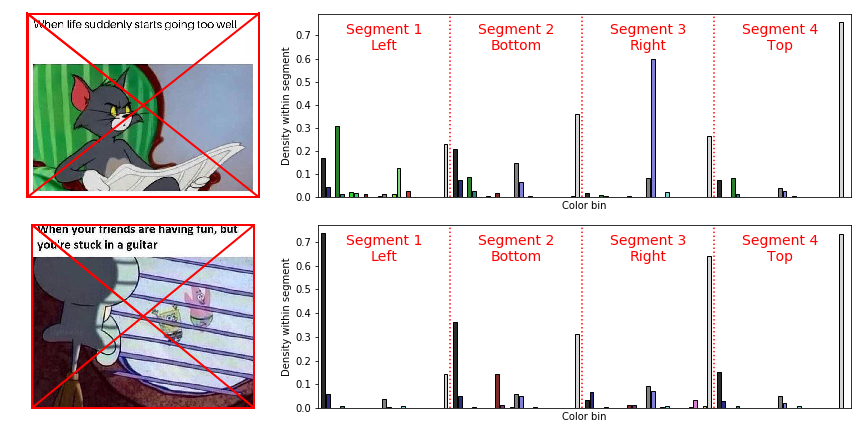As a person of culture and science, I decided to build a model to identify memes. This problem is far simpler than the Image-Net competition and so a simpler solution is appropriate. I will demonstrate this by comparing the “Meme Vision” framework to ResNet-50 (the winner of Image-Net 2015).
Method: Meme Vision framework
In a previous article I explained the radial histogram method;
Radial Color Histograms
(TL;DR — it measures the distribution of color in each segment of the image)
Below we see how this can reduce images to very low dimensional representations.

Basic radial color histogram example with 3 bins per color channel and 4 segments (giving 4*3³=108 features)
The final Meme Vision model uses a few extra steps:
- Convert from RGB to HSV - color degradation is less of a problem to computers when viewed in the HSV palette.
- Log transformation of pixel counts to help focus on the little differences.
- Use 8 bins per channel (instead of 3) to distinguish similar color shades, which results 2048 features (instead of 108).
- Feed these features into a linear support vector machine.
#image-recognition #optimisation #neural-networks #memes #image-classifier #neural networks
